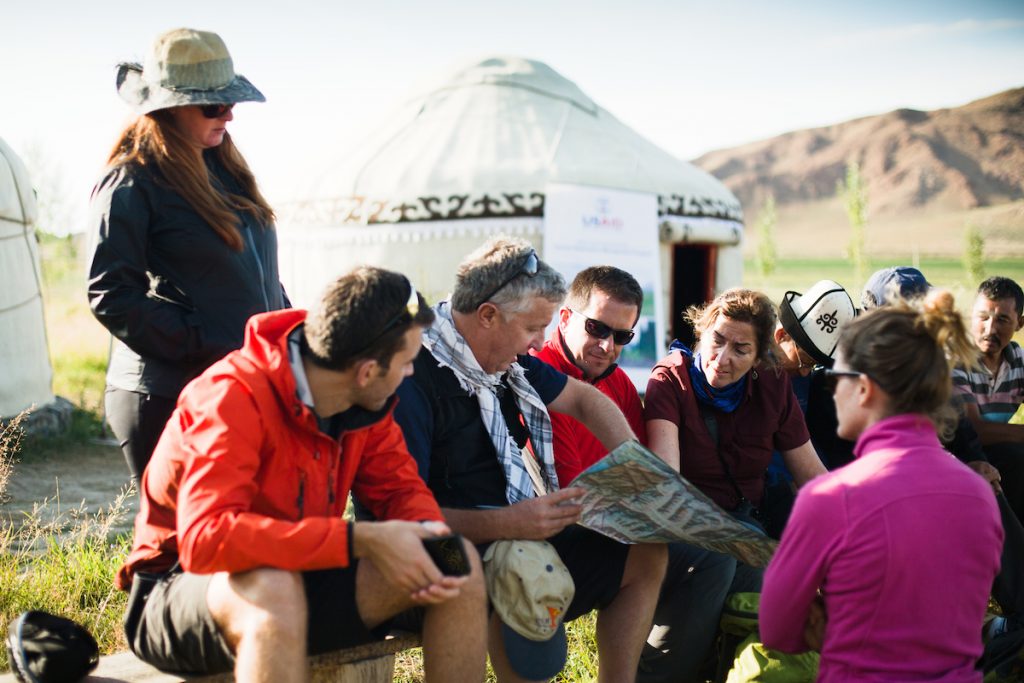As the COVID-19 pandemic continues to vex the world and severely impair the tourism industry, destinations are struggling to adapt and offer a safe destination for travelers. The region of Central Asia, including the nations of Kazakhstan, Kyrgyzstan, Tajikistan, Turkmenistan and Uzbekistan, is working to adopt timely principles and guidelines and invest in recovery strategies to prepare for tourists to return. Destinations in the Central Asia region are seriously impacted by the crisis and will experience slower recovery compared to other parts of the world. A multitude of global facts will contribute to an extended period of restoring the regional tourism economy. This represents an opportunity that businesses in the region should capture.
As part of this recovery effort, the tourism boards of these five Central Asian countries are joining the global adventure community and focusing on responsible active tourism. One of the region’s initiatives has been a series of three online Central Asia (CA) COVID-19 Recovery Strategy Training webinars throughout May and June 2020 in partnership with the Adventure Travel Trade Association (ATTA). This training series was supported by the United States Agency for International Development (USAID) as part of the Competitiveness, Trade, and Jobs Activity in Central Asia. The webinars were planned, coordinated, and delivered by ATTA’s experts in adventure travel, sustainable destination development and tourism safety guidelines.
During the training, participants discussed the challenges and opportunities in the time of COVID-19. The group acknowledged that the 2020 summer season is lost, and the region is not currently a highly popular tourism destination. The area’s primary source markets are calling for their residents to keep their travel plans domestic and to travel in small groups, preferably comprised of a family or a group of friends. Additionally, most of the travelers that visit the region are 50+ years old, and therefore at a higher risk of COVID-19.
However, there might be a chance for some winter offerings in 2020-2021. The big open-spaces and territories of each of the countries offer an opportunity for travelers to spend time in nature without the need to be surrounded by other people. Now is the time to use networking opportunities and explore and develop new products and experiences, including cross-border collaborations. There is a need for new offerings and adjusted portfolios, which include experiences for families and small groups, as well as self-guided programs.
The current pause in travel also affords countries the opportunity to set safety procedures in place. New protocols for safety and health are starting to emerge, and it is essential to apply the ones that are globally recognized and signal international-level standards. Tourism players in the Central Asia region acknowledge that introducing standards should be accompanied by significant efforts to train staff and ensuring that new protocols and processes will be consistently applied.
Participants from the five Central Asia countries committed to reviewing and implementing safety standards such as the WTTC COVID-19 Safety and Health Protocols and the Adventure Travel COVID-19 Health & Safety Guidelines. This forward-looking approach will allow Kazakhstan, Kyrgyzstan, Tajikistan, Turkmenistan and Uzbekistan to offer a safer experience to all tourists throughout and after the COVID-19 recovery period. To further support the development of adventure tourism in the region and enable the tourism boards with access to global knowledge, expertise and opportunity for networking, the USAID Competitiveness, Trade, and Jobs Activity in Central Asia supported Kazakhstan, Kyrgyzstan, Tajikistan and Uzbekistan with ATTA membership. The ages-long history, the cultural richness, the wild nature and the well-preserved cultural and natural assets of this less-visited region offer a great opportunity for adventure experiences.

